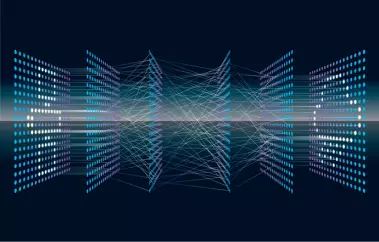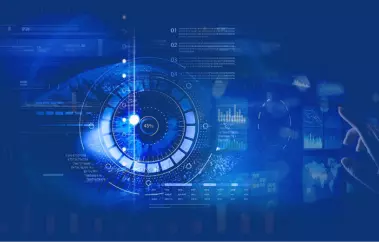Exploring the Realm of Computer Vision: Unveiling the Power of Visual Intelligence
In the age of digital transformation, the field of computer vision has emerged as a fascinating and impactful area of study. Rooted at the intersection of artificial intelligence and image processing, computer vision is revolutionizing industries and human experiences through its remarkable ability to enable machines to perceive, interpret, and understand the visual world. As we delve into the nuances of computer vision services, we uncover a realm where pixels become narratives, and machines acquire the gift of sight.
The Essence of Computer Vision Services:
At its core, computer vision is the art of teaching machines to comprehend and interpret the visual information that humans effortlessly process. This technology employs algorithms and neural networks to extract meaningful insights from images and videos, replicating the cognitive functions of the human visual system. Computer vision services encompass a wide array of applications, ranging from basic image recognition to advanced tasks such as object detection, facial recognition, image segmentation, and even more complex challenges like scene understanding and visual reasoning.
Unleashing Practical Applications:
The spectrum of computer vision services extends across numerous industries, each benefiting from its unique capabilities:
Healthcare:
Medical professionals employ computer vision to assist in the diagnosis of diseases through image analysis. From identifying anomalies in X-rays and MRI scans to monitoring patient vitals using video inputs, computer vision aids in delivering accurate and timely medical assessments.
Automotive:
The evolution of self-driving cars hinges on computer vision. By processing real-time data from cameras and sensors, vehicles can perceive their surroundings, identify obstacles, and make split-second decisions for safe navigation.
Retail:
Online and offline shopping experiences are enhanced by computer vision. Product recommendation systems utilize image analysis to suggest items that align with customer preferences, while cashier-less stores employ computer vision for seamless checkout experiences.
Manufacturing:
Quality control and automation are transformed with computer vision. Defect detection on production lines, real-time monitoring of equipment, and robotics guidance are just a few examples of how manufacturing benefits.
Agriculture:
From assessing crop health through drone imagery to automated sorting and grading of produce, computer vision optimizes agricultural processes for efficiency and productivity.
Security and Surveillance:
Computer vision technologies are used for facial recognition, intrusion detection, and anomaly identification, bolstering security and surveillance systems.
The enabling Technologies:
The backbone of computer vision services comprises cutting-edge technologies, including:
Deep Learning:
Deep neural networks, such as convolutional neural networks (CNNs) and recurrent neural networks (RNNs), are pivotal in extracting patterns and features from images, leading to accurate recognition and classification.
Image Processing:
Techniques like edge detection, image filtering, and morphological operations are employed to preprocess and enhance images before analysis.
Feature Extraction:
Identifying distinctive features within images is vital for object recognition. Techniques like SIFT (Scale-Invariant Feature Transform) and SURF (Speeded-Up Robust Features) play a significant role.
Object Detection:
Innovation:
Utilizing algorithms like YOLO (You Only Look Once) and Faster R-CNN, computer vision can not only identify objects in an image but also locate them with bounding boxes.
Challanges and Future Directions:
While computer vision has made remarkable strides, challenges persist. Variability in lighting conditions, occlusion, and scale can hinder accurate recognition. Ethical concerns surrounding privacy and biases in facial recognition systems also demand careful consideration.
The future of computer vision holds the promise of further integration with augmented reality, virtual reality, and the Internet of Things (IoT). As processing power increases and algorithms evolve, we can anticipate more robust and context-aware visual intelligence systems.
Use cases
Here's a list of 20 use cases of computer vision along with a brief explanation of each, including the algorithms and ways they benefit businesses:
Facial Recognition for Access Control:
Algorithm: Deep neural networks (CNNs)
Businesses can use facial recognition to enhance security by allowing authorized personnel access to restricted areas. Deep neural networks analyze facial features and match them against a database, granting access only to authorized individuals.
Automated Quality Inspection in Manufacturing:
Algorithm: Convolutional Neural Networks (CNNs)
Computer vision systems equipped with CNNs can quickly and accurately inspect products for defects on manufacturing lines, ensuring high-quality standards and reducing human error.
Retail Shelf Monitoring:
Algorithm: Object Detection (YOLO, Faster R-CNN)
Retailers use object detection algorithms to monitor shelves, ensuring products are stocked correctly. This reduces out-of-stock situations and enhances the customer shopping experience.
Medical Image Analysis:
Algorithm: Segmentation Algorithms (U-Net, FCN)
Medical professionals leverage segmentation algorithms to precisely outline regions of interest in images like X-rays and MRIs, aiding in diagnosis and treatment planning.
Autonomous Vehicles:
Algorithm: LiDAR and Computer Vision Fusion
Autonomous vehicles combine computer vision with LiDAR technology to detect and understand their surroundings, enabling safe navigation and avoiding collisions.
Augmented Reality (AR) Applications:
Algorithm: Marker Detection and Tracking
AR applications use computer vision to recognize and track markers in the real world, overlaying virtual content for immersive experiences, like in gaming or marketing campaigns.
Security Surveillance:
Algorithm: Anomaly Detection
Computer vision can detect unusual activities or behaviors in surveillance footage, alerting security personnel to potential threats in real-time.
Document Analysis and Optical Character Recognition (OCR):
Algorithm: OCR Engines (Tesseract, ABBYY)
Businesses digitize and extract information from printed documents, enabling faster data entry, searchability, and analysis.
Gesture Recognition for Human-Computer Interaction:
Algorithm: CNNs and RNNs
Gesture recognition allows users to interact with devices using hand movements, enabling touchless control in various applications like gaming or user interfaces.
Emotion Analysis in Marketing:
Algorithm: Sentiment Analysis
Businesses analyze facial expressions to gauge customer emotions and reactions to products or advertisements, informing marketing strategies.
Retail Checkout Automation:
Algorithm: Object Detection and Tracking
Automated checkout systems use computer vision to identify and track items as customers place them on the counter, enabling cashier-less transactions.
Crop Health Monitoring in Agriculture:
Algorithm: Image Classification
Drones equipped with computer vision analyze crop images to identify signs of disease, nutrient deficiencies, and stress, aiding in precision agriculture.
Real-time Language Translation:
Algorithm: Text Detection and Translation
Computer vision can capture text from images, and translation algorithms can convert it to another language in real-time, aiding travelers and businesses.
Visual Search in E-commerce:
Algorithm: Image Similarity Comparison
Users can search for products using images rather than keywords, enhancing the shopping experience and helping businesses showcase similar items.
Sports Analytics:
Algorithm: Object Tracking
Computer vision tracks players and ball movements during sports events, providing valuable insights for coaching, training, and audience engagement.
Fire and Smoke Detection:
Algorithm: Image Classification and Anomaly Detection
Computer vision systems can identify the presence of fire or smoke in real-time, enabling early fire detection and prevention.
Real Estate Virtual Tours:
Algorithm: 360° Image Stitching
Computer vision stitches multiple images together to create immersive virtual tours of real estate properties, helping potential buyers explore spaces remotely.
Personalized Advertising:
Algorithm: Image Analysis and User Profiling
Advertisers use computer vision to analyze user preferences from images shared online, delivering personalized advertisements to target audiences.
CCTV Analytics for Retail Insights:
Algorithm: People Counting and Heatmaps
Retailers analyze customer movement patterns using computer vision, optimizing store layouts and enhancing product placement based on customer behavior.
Prescription Verification in Pharmacy:
Algorithm: Optical Character Recognition (OCR)
Pharmacies use OCR to ensure the accuracy of prescriptions, reducing the risk of medication errors and improving patient safety.
These use cases illustrate the wide-ranging impact of computer vision across industries, showcasing how algorithms and technologies contribute to business efficiency, innovation, and enhanced customer experiences.
Computer vision services are redefining the possibilities of human-computer interaction and decision-making. By bestowing machines with the ability to perceive and interpret the visual world, computer vision services are shaping industries, enhancing efficiency, and ultimately enriching our lives in ways previously unimaginable. As we continue to push the boundaries of this technology, we stand at the cusp of a new era where the pixels we see are no longer just data points, but windows into a realm of endless possibilities.


